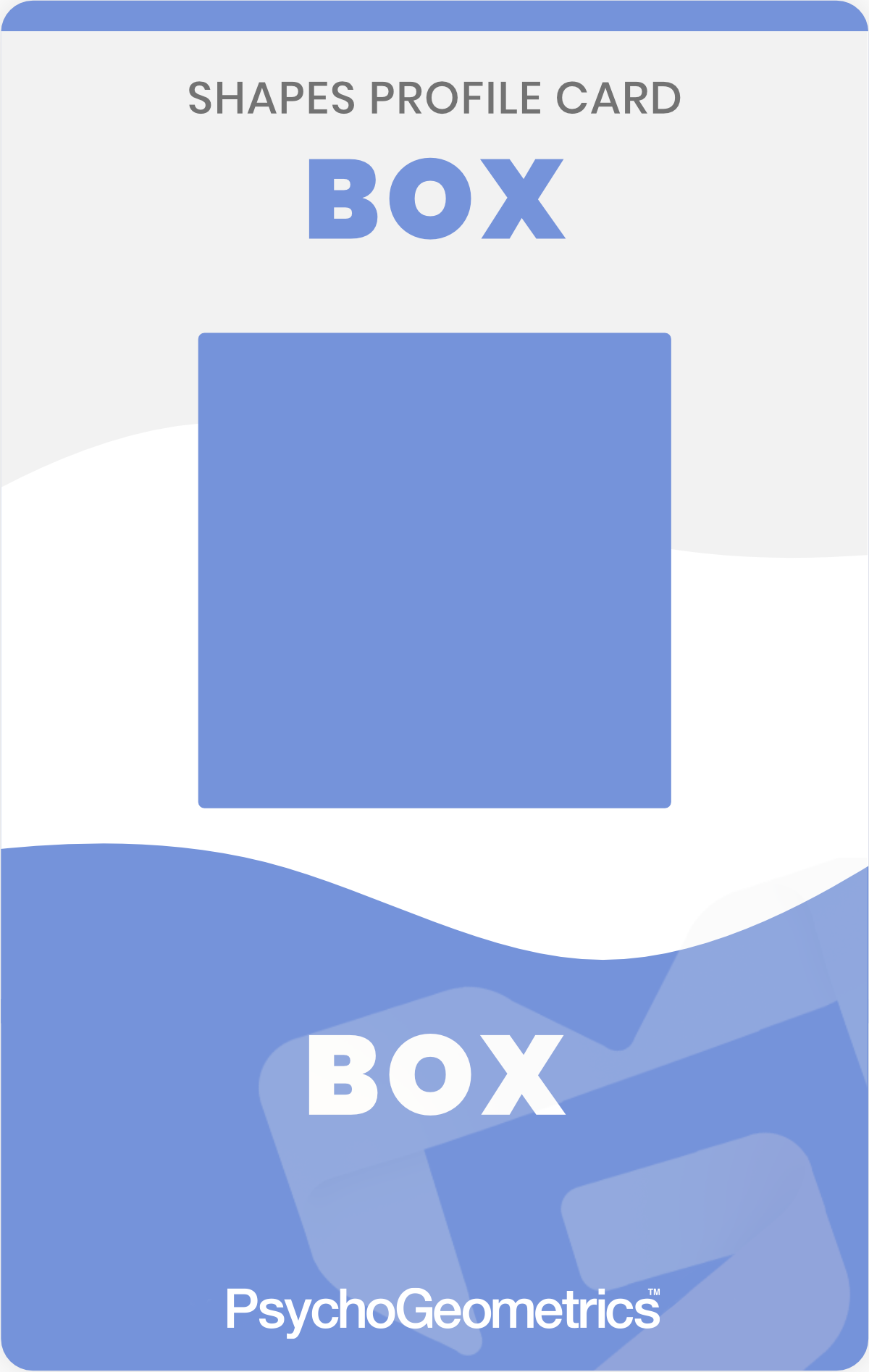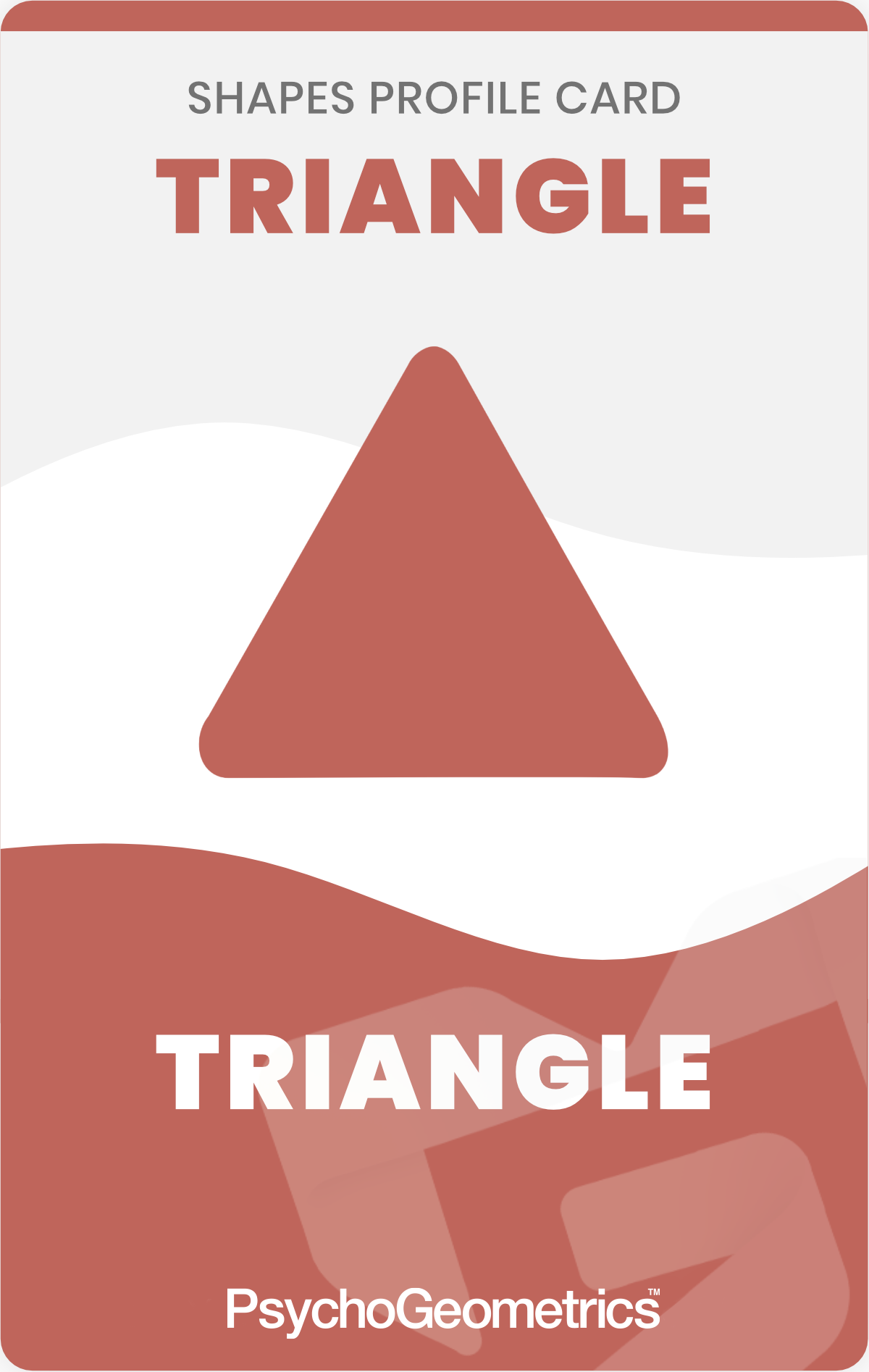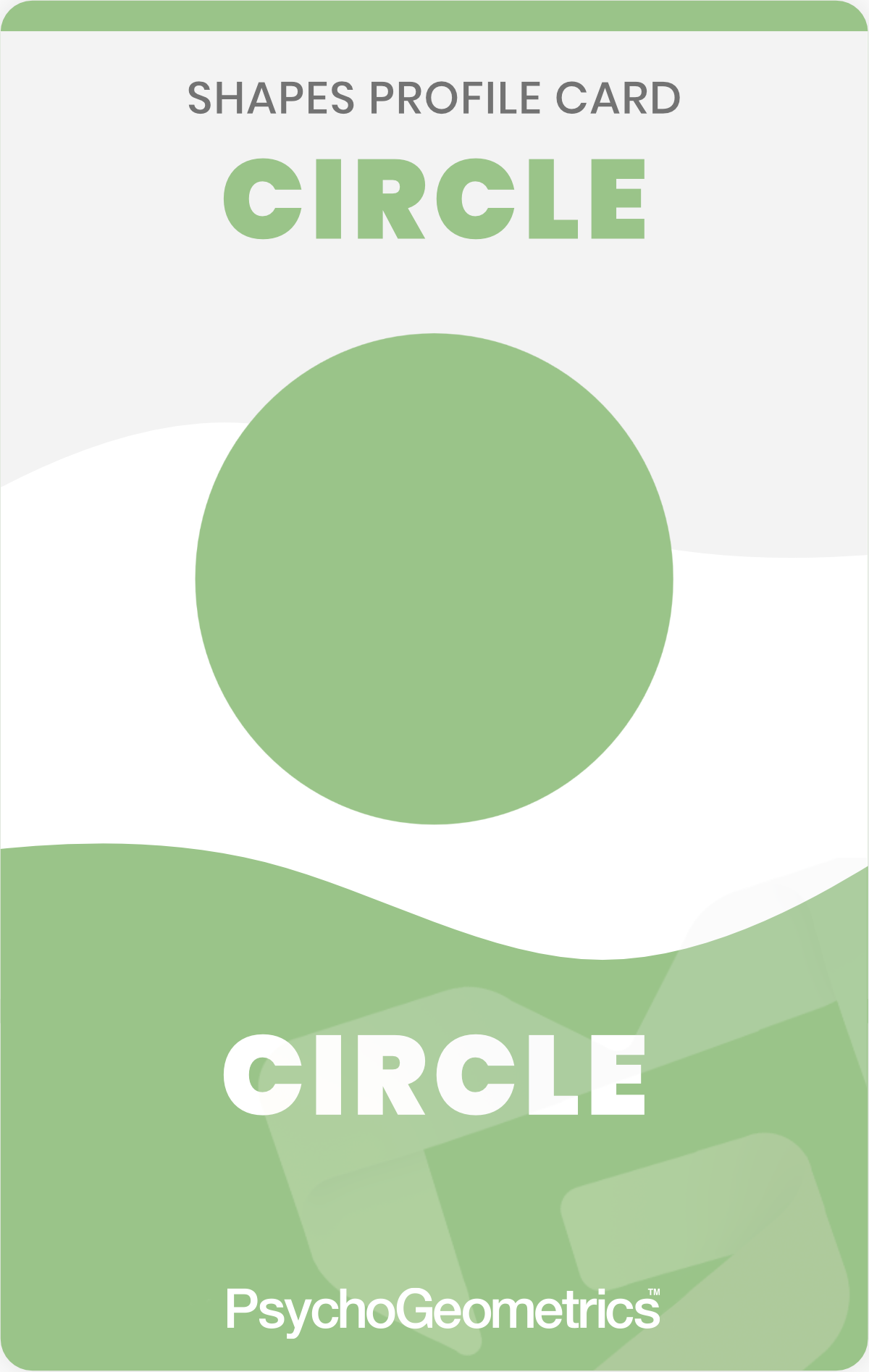YOUR SHAPES PROFILE
3 WAY SHAPES TIE
EXPLORE YOUR SHAPES ASSESSMENT RESULTS BELOW



YOUR SHAPES PROFILE
EXPLORE YOUR SHAPES ASSESSMENT RESULTS BELOW



SHAPE RESULTS & REPORT BREAKDOWN
FOR BRAD ZIMMERMAN

TRAITS
BEHAVIORS
RELATING TO OTHERS

TRAITS
BEHAVIORS
RELATING TO OTHERS

TRAITS
BEHAVIORS
RELATING TO OTHERS

TRAITS
BEHAVIORS
RELATING TO OTHERS

TRAITS
BEHAVIORS
RELATING TO OTHERS
As you may have noticed from your shape scores, you have a three-way tie for your primary shape. This could mean:
a.) Your responses are representative of both your natural behaviors and your learned behaviors; therefore, it is not clear which shapes are your shape strengths and which ones are skill sets you have developed, but you are probably using a blend of the three shapes to demonstrate who you are, what you do, and how you interact with others.
NOTE: The assessment is intended to measure your natural strengths by revealing your primary and secondary shape strengths. This is why participants are asked to respond in their most natural state, not in a state that has been learned or developed.
b.) Although rare, it might indicate you have more than two natural shape strengths.
OR it could mean
c.) You are experiencing a “rectangle phase” in your life right now.
Regardless of your actual rectangle score, a three-way tie among any of the five shapes can indicate you are experiencing change. The rectangle is not a primary or secondary shape; rather, it is a “transitional” shape. The rectangle is the shape of change and growth, and when experiencing change and growth, you may be unsure of exactly what to do, how to respond, how to manage or lead the change; or you may find you have to use a different skill in order to navigate your way through the change.
This is why you may find yourself using shapes that are outside of your natural strengths, which show up as a higher score than typical, making it difficult to determine a clear primary and secondary shape among your three tied shapes.
A natural shape strength is something you have always done or been good at doing since childhood. A learned skill shape is something you can do or have learned how to do but don’t necessarily like doing or do well.
A natural shape strength is something you do naturally.
A learned skill shape is something you have to think about doing.
If you are experiencing a “rectangular phase in your life right now,” you may find yourself using a little of all of the shapes, or at least more than just your primary and secondary shapes, or possibly one dominant shape more than any of the others.
This can make managing the change all the more challenging or frustrating. However, keep in mind, during change, it may be necessary to use different “shapes” to survive, manage or master the change.
A rectangular phase may feel awkward, but change is key to your growth. Depending on how significant the change may be, you can expect a rectangular phase to last anywhere from 3-18 months.
Once you come through the change, you may find two of your three tied shapes will increase in score and clearly emerge as your primary and secondary shapes, or at least the two shapes you will use the most after experiencing change, whether they are your true natural shape strengths (primary and secondary shapes) or a combination of a natural shape strength and a learned shape skill.
Change can literally change you, and that’s ok in some circumstances, as long as the change is healthy.
After experiencing change, you may find you are more:
It all depends on the type of change you may be experiencing.
Meanwhile, if you think your responses are due more to answer a) above, you may be able to break the tie by asking yourself:
Typically, your answers to these questions above represent the two shapes you enjoy, are more comfortable, and are better at using the most, which can indicate your primary and secondary shapes. Using this method to break the tie may help you distinguish between your natural shape strengths and learned skill sets.
If you are interested in learning more about your specific shapes score and what it means to you, schedule a call with one of our PsychoGeometrics Licensed Consultants; click here.
The PsychoGeometrics® system provides useful feedback by analyzing your results based on:
LOW (0-3)
If you score low in a shape, it doesn’t mean you are below average, or that your score is bad.
It simply means you do not have a high percentage of this shape within you naturally. In fact, when using one of your lower score shapes, you may find it awkward or uncomfortable using it. Using one of your low-score shapes, even if you only use it sparingly, could be the very shape behavior that helps maximize or manage one of your shape strengths.
A low score can also signal a development opportunity for you.
MEDIUM (4-6)
If you score medium in a shape, it doesn’t mean you are average, or that your score is average.
It simply means you have a medium percentage of this shape within you. It can influence your shapes with higher scores, but it is probably not your “go-to” shape.
Knowing how to leverage a medium score can help balance out a higher shape score, or help compensate for a lower shape score.
HIGH (7 OR MORE)
It simply means you have a high percentage of this shape within you naturally. Your highest shape score represents your Primary Shape. Your next highest shape score represents your Secondary Shape.
How you use and manage your high score Shapes determines if your Primary and Secondary Shapes are your strengths, your challenges, or a little of both as a communicator.
Knowing how to Shape Flex, which means learning how to naturally, skillfully and/or strategically use any of the shapes or blend of shapes regardless of your scores, is KEY to leveraging your Shape strengths, managing your Shape challenges, being an effective communicator and strengthening your relationships.
NOTE: THERE IS ONE EXCEPTION TO THIS SCORING GUIDE, WHICH PERTAINS TO THE RECTANGLE.
The Rectangle is neither a primary or secondary shape. It is a transitional and temporary shape. It is typical for most people to have a low score in Rectangle (3 or less). That is because most people are not naturally good at being open-minded, embracing and navigating their way through change.
The higher the score in Rectangle, typically the bigger the change. Therefore, unlike the other four shapes, a medium or high score in Rectangle doesn’t indicate how much Rectangle you have within you naturally. Instead, it is an indication of how much change and growth is part of your life at this moment.
Changes can be exciting or scary, but either way most people find change challenging to manage.
You can learn more about the Shape Scores, Shape Perception, Shape Flexing and other Shape information and applications in our e-learning series.
YOUR TRAITS
In the category of “Your Traits,” the item choices focus mostly on human characteristics.
YOUR BEHAVIORS
In the category of “Your Behaviors” the item choices focus mostly on habits (repeated behaviors) at work and home.
RELATING TO OTHERS
In the category of “Your Interaction with Others,” your communication style is congruent with your thinking style, which influences the way you choose to communicate with others.
THESE THREE CATEGORIES OF THE ONLINE ASSESSMENT ARE TESTED BY GIVING YOU CHOICES THAT ARE SINGLE ADJECTIVES AND SHORT PHRASES THAT DESCRIBE THE FIVE SHAPES.
Communication is behavior and, as such, can be observed and quantified. Each of the five shapes demonstrate unique communication behavior. It is the blend of these three categories, tested in 89 item choices, that gives you your Personal Shapes Profile Report and indicates your personal communication style.

Boxes prefer to communicate in written form. They tend to speak slowly, precisely, and calmly and use limited body language. They prefer 1-to-1 communication and can be uncomfortable in large groups.

Triangles tend to have strong and deeper voices than the other shapes and alter the volume for emphasis. They may also use pointed gestures and direct eye contact. They typically enjoy competition and thrive in small and large groups where they can be in charge.

Rectangles are in a state of transition. They may hesitate in their communication, carefully thinking and considering each of the four other shapes. They are good listeners and ask questions often. During this state of change, they are not seeking to stand out, but rather would prefer to hang out and observe, ask questions, and not calling attention to themselves.

Circles exude warmth in their communication style. They tend to smile, nod, gesture and typically use physical touch, such as extending a hand to shake or fist to bump, a pat on the arm or back, or a hug. Circles communicate best 1-to-1, but they are equally as happy in small, intimate groups.

Squiggles are highly energetic and expressive in their communication style. They can get so excited that they lose their train of thought. They prefer large groups where they have an audience for their “presentation” or “performance.”
People who have either primary or secondary shapes of Box and Triangle tend to have left brain thinking styles.

People who have either primary or secondary shapes of Circle and Squiggle rely more on their right brain.
This means that the Box and Triangle are linear shapes and are logical and sequential thinkers.
The non-linear shapes of Circle and Squiggle are more oriented to abstraction and creativity.
The Rectangle is the shape of change and growth, and with raised awareness and skill, can be used to think, see, and feel using each of the four other shapes, drawing from both sides of the brain. The Rectangle is not a primary or secondary shape, but rather a transitional shape during period of change in one’s life.


The BOX is a left-brain, inward, and task-oriented shape. The Box is also dedicated, committed and loyal, both personally and professionally. As the most left-brain shape of all five shapes, the Box is the most organized of the Shapes.
In addition, the Box is typically a logical and practical individual who values an orderly process. People with strong Box-like traits and behaviors tend to also be perfectionists.
In fact, the Box person is also the most knowledgeable of the Shapes. Some of the Box’s most positive traits are dependability, perseverance, and patience.
On the other hand, Boxes can be perceived as nit-picking, aloof, and resistant to change. Although not naturally outgoing in social situations and typically choosing to work alone, Boxes are loyal, sometimes to a fault, and make trustworthy business and life partners, colleagues, and friends.

The TRIANGLE is a mostly left-brain, outward, and goal-oriented shape. The Triangle typically seeks leadership, but sometimes leadership opportunities naturally find the Triangle.
They are adept at taking charge and can unknowingly intimidate others with their confidence and decisive decision making. By nature, Triangles often feel “destined to succeed.”
One of the Triangle’s strengths is the ability to delegate work to others – a key skill in any type of leadership role. Although they are effective negotiators, Triangles are highly opinionated and can sometimes get so focused on the immediate need to act, that they are not broad, or global, conceptual thinkers.
Instead, they are naturally quick decision-makers and can be extremely focused on each singular objective. This bottom-line oriented person bores easily, can become impatient, and ask others to “Get to the point!”
Often athletic, or sports-minded, they are highly competitive in most everything they do. Even when a Triangle may not be well-liked, Triangles are typically highly respected, for getting things done.

The RECTANGLE is the shape of change and growth, having the ability to use both left and right brain traits and able to see through the lens of the other four shapes.
Rectangle behavior is typically a state of transition, a temporary state of change.
In some cases, the rectangular phase is exciting because the Rectangle is in a learning phase and searching for something new in their lives.
On the other hand, the rectangular phase can be confusing, frustrating, sad, or scary, depending upon the reason for the change.
Rectangles can be highly inquisitive and courageous during this period of change and will often experiment and try new things. Even so, the state of “I don’t know,” means it is uncertain where the future will take them.
Some people experiencing the Rectangular phase are the rookie in a new and unfamiliar situation, who is suggestible and vulnerable. This sometimes produces a lack of confidence spawning indecision and inconsistency.
It has been said that the only predictable thing about a Rectangle is that they are unpredictable! The good news is – Rectangular periods are temporary…it will pass.

The CIRCLE is a mostly right brain, inward and relationship-oriented shape.
Circles are very much focused on the well-being of others and achieving and sustaining harmony among the team. Circles do not like conflict and will often back down in the face of an argument, to keep the peace.
In general, Circles are good communicators who can listen and empathize well with others. Because of this, they can be very persuasive.
They prefer one-to-one communication.
They can be generous to a fault and too accommodating at times. Circles tend to act more as ‘stabilizers’ than leaders in the workplace. They are also good mentors who genuinely enjoy empowering and enabling of others.

The SQUIGGLE is a right brain, outward and people-oriented shape. True Squiggles might even call themselves eccentric.
These individuals tend to be exceptionally creative, expressive, and witty and can be the least-organized of all the Shapes.
Squiggles typically struggle with routine work and prefer variety and the freedom to be spontaneous in their day to day schedule.
Squiggles tend to be the “idea producers” in society, and when settling on a specific idea can be extremely excited and intense about a project. Squiggles also tend to bring energy to others, and they can be the most inspirational and motivational of all the shapes.
Remember all 5 Shapes are within you!
“Although you typically have a primary and secondary shape that you are naturally good at using, this does not mean you cannot access or be good at using the other shapes.”
It is true that some shapes are easier and more natural to use than others, but it is also true you can learn to use the other shapes, acquiring or developing specific skillsets that correspond to each of the remaining shapes.
The best communicators learn to “FLEX” to their less dominant shapes to connect and communicate more effectively with others.
Whether you are looking for Virtual, Online, OR Onsite Learning, we have options based on your specific objectives and budget.
Live Keynotes, Workshops and Training Programs are available both online and in-person for business units, specific departments or groups, and teams.
Choose the course in your area of interest and learn at your own pace.
Whether you register for a teambuilding series, or a stand-alone team building experience, your team can participate both virtually and in-person.